#Europe Connected Car Market
Explore tagged Tumblr posts
Text
Which Market Trends will Drive Europe Connected Car Market?
Europe connected car market has witnessed significant growth, driven by advancements in communication technology, consumer demand for enhanced vehicle safety and convenience, and regulatory mandates for vehicle connectivity features. Connected cars integrate internet access, GPS, and various telematics systems to provide drivers and passengers with real-time information, entertainment, and vehicle safety features. Europe is one of the leading regions for connected car adoption, with major automakers, technology firms, and governments investing in the development of connected infrastructure and supporting regulations.
To explore Europe Connected Car Market in terms of market drivers, competitive analysis, regional market analysis or market segmentation, you can request a Free Sample Copy of this Market Research Report. Fill out the form to obtain Europe Connected Car Market Free Sample Report with following details;
· Historic Analysis
· Market Size
· Trade Forecast
· CAGR
· Market Segmentation
· Business Opportunities
· Commerce Challenges
· Key Geographies
· Key Companies
· Supply Trend
· Demand Insight
· Target Audience
Market Trends in the Europe Connected Car Market
1. Growing Demand for Advanced Driver Assistance Systems (ADAS):
European consumers increasingly prioritize safety features in their vehicles, boosting the demand for Advanced Driver Assistance Systems (ADAS). Features like lane departure warnings, automatic emergency braking, adaptive cruise control, and collision avoidance systems are essential components of connected vehicles. These systems improve road safety by helping drivers anticipate and avoid accidents. In Europe, regulatory bodies like the European Union (EU) have mandated the inclusion of some of these features in new vehicles, contributing to the growth of ADAS in connected cars.
2. Rise of In-Vehicle Infotainment:
In-vehicle infotainment systems are a key aspect of connected cars, enhancing the driving experience by providing entertainment, navigation, and connectivity features. European consumers, especially in countries with long commuting times, increasingly value infotainment systems that offer seamless integration with smartphones and personalized entertainment options. Voice-activated assistance, real-time traffic updates, and access to streaming services are becoming standard in new models. As automakers collaborate with tech companies, the in-vehicle infotainment segment is expected to grow, contributing significantly to the connected car market.
3. Vehicle-to-Everything (V2X) Technology:
Vehicle-to-Everything (V2X) communication is an essential innovation in the connected car ecosystem, encompassing Vehicle-to-Vehicle (V2V) and Vehicle-to-Infrastructure (V2I) communication. V2X allows vehicles to communicate with each other and with surrounding infrastructure to enhance road safety and optimize traffic flow. In Europe, several pilot projects and initiatives, like the European Cooperative Intelligent Transport Systems (C-ITS) deployment, are being undertaken to build V2X-enabled smart cities. V2X technology is expected to play a crucial role in the development of autonomous vehicles and is a strong growth driver in the connected car market.
4. Data Privacy and Security Challenges:
As vehicles become increasingly connected, data privacy and security have emerged as critical concerns. Connected cars generate and exchange vast amounts of data related to vehicle diagnostics, driving behavior, and personal information. Ensuring the protection of this data is essential to prevent potential cyber threats. The EU's General Data Protection Regulation (GDPR) has set strict guidelines on data privacy, compelling automotive companies to adopt robust cybersecurity measures. Automakers are investing in cybersecurity technologies to secure data transmission and protect users’ privacy, making it an essential part of connected car technology development.
Regional Analysis of Europe Connected Car Market
1. Germany:
Germany, as a major hub for automotive manufacturing, is one of the leading markets for connected cars in Europe. With renowned automakers like BMW, Mercedes-Benz, and Audi heavily investing in connected technology, Germany is driving innovation in the market. The German government supports connected car technology through initiatives focused on autonomous driving, V2X infrastructure, and digital highways. Additionally, German automakers are integrating 5G technology to enhance vehicle connectivity, making Germany a frontrunner in connected car advancements.
2. United Kingdom:
The United Kingdom has positioned itself as a key player in Europe’s connected car market, with significant investments in autonomous driving and smart infrastructure. The UK government has introduced regulatory frameworks to support the deployment of connected cars and promote innovation in autonomous driving technology. The UK’s emphasis on 5G networks and smart city infrastructure aligns well with the goals of the connected car market. As the UK continues to invest in digital infrastructure and autonomous vehicle research, it is expected to contribute significantly to the growth of connected cars in Europe.
3. France:
France’s connected car market is growing, driven by consumer demand for safer and more efficient vehicles. French automakers like Renault and PSA Group are investing in connected technology and partnering with tech companies to enhance their vehicles’ connectivity features. France is also focusing on V2X infrastructure to support autonomous driving and smart transportation systems. The French government’s commitment to reducing road accidents and emissions supports the adoption of connected car technologies, making France a prominent player in the European market.
4. Scandinavia:
Scandinavia, particularly Sweden and Norway, is rapidly adopting connected car technology due to the region’s focus on sustainability and smart cities. These countries have implemented policies to promote electric and connected vehicles as part of their green initiatives. Scandinavian automakers like Volvo are leading in safety-focused connected technologies and V2X capabilities. As Scandinavia continues to prioritize sustainability and digital transformation, connected car adoption is expected to accelerate in this region.
Future Trends and Outlook of Europe Connected Car Market
1. 5G Integration and Expansion:
The expansion of 5G networks across Europe will significantly enhance connected car functionality. 5G provides the low latency and high-speed connectivity needed for real-time data exchange, crucial for autonomous driving and V2X applications. As 5G networks become more widely available, connected cars will benefit from improved navigation, faster infotainment, and enhanced safety features, making 5G integration a key trend in the market.
2. Shift Toward Autonomous Vehicles:
The European connected car market is moving toward autonomous driving. Connected cars equipped with ADAS, V2X communication, and real-time data processing capabilities are paving the way for autonomous vehicle development. As regulatory frameworks evolve and pilot programs expand, Europe is expected to become a leader in autonomous vehicle technology, with connected cars playing an essential role in the transition.
3. Sustainability Initiatives and Electric Vehicles (EVs):
Europe’s commitment to reducing carbon emissions aligns with the growth of connected electric vehicles. Governments across Europe are promoting EVs through incentives and infrastructure development, with connected technology being a complementary feature that enhances EV efficiency. Connected EVs can optimize route planning, monitor battery health, and integrate with smart grids for sustainable energy use, supporting Europe’s vision of a greener automotive industry.
4. Focus on In-Vehicle Experience:
The focus on in-vehicle experience is expected to grow as consumers seek enhanced connectivity and convenience features. Automakers are likely to offer more customizable infotainment options, seamless integration with smartphones, and personalized driving experiences. As the connected car ecosystem advances, the in-vehicle experience will play a key role in differentiating brands and attracting tech-savvy consumers.
To Wind Up;
Europe connected car market is poised for robust growth, fueled by advancements in technology, supportive regulatory frameworks, and consumer demand for enhanced safety and connectivity. As the region invests in digital infrastructure and smart city initiatives, connected cars will play a central role in Europe’s automotive future. With 5G integration, advancements in autonomous driving, and a focus on sustainable transportation, the European connected car market is set to be a global leader in automotive innovation.
MRFR New Research Insights on Category Intelligence:
The procurement management department plays a strategic role in overseeing the acquisition of goods and services to meet organizational needs. It focuses on optimizing procurement processes, managing supplier relationships, controlling costs, and ensuring compliance with policies. Explore more on our Latest Category Intelligence Reports to get detailed information.
Explore More;
Europe Electric Trucks Market
India Electric Bike Market
Bicycle Saddle Market
Medium Duty Truck Market
Software-Defined Vehicle Market
0 notes
Text
In My Blood | Part One
In My Blood Masterlist
Curtis "Curt" Biddick x SOE!Female Reader
The aftermath of the Schweinfurt-Regensburg mission floods the Belgian countryside with American fliers, including one very injured Curtis Biddick. On a regular supply run to a Resistance contact, you suddenly find him sharing your regular place of shelter for the night, a simple coincidence that very well may change the course of the rest of your life.

Warnings: MAJOR canon divergence, Language, Violence, Weapons, Spy Craft, Death, Injuries, Angst, Suffering, Inevitable Historical and Military Inaccuracies, Mature/Explicit Themes - 18+ ONLY.
Author’s Note: This story contains revisionist history, read at your own risk. Reader is half-Belgian, half-English and has been given an extensive backstory and family tree. While they have been given the codename of "Marie," no physical descriptions or Y/N are used.
Italics used for non-English words and to indicate dialogue spoken in a language other than English.
This is a work of fiction based off the portrayal by the actors in the Apple TV+ series. I hold nothing but respect for the real life individuals referenced within.
Word Count: 4200
-------------------------
August 17, 1943
Pouring from the sky like a summer rain…you had never seen so many downed airmen in one day. It seemed the American Air Force had mounted some great attack. An attack that was met with what must have been every single Luftwaffe fighter plane that now infected your native Belgian soil. The majority were captured by Nazi soldiers, Gestapo, or collaborators the moment their boots hit the ground, keen eyes following the tracks of parachutes as they floated to the ground. But the lucky ones got away, stayed hidden, or were greeted by more friendly faces.
The efforts you had been putting in over the past three months on the exfiltration routes for downed airmen in Western Europe – helping to rebuild and reshape the Pat O’Leary Line into the Françoise Line after the arrest of its former chief, connecting the Belgian-run Comet Line with monetary and equipment-based support from MI9’s agent Jerome in Paris – the timing could not have been better for the sheer demand that the events of the day would put upon them. They were as strong as they could be and yet undoubtedly these numbers would overwhelm them.
Born the only child of a Belgian Jonkheer and the second daughter of the Marquess of Abergavenny, that you would end up as an agent of the Special Operations Executive had been as foreseeable as the Nazi invasion of Belgium. Unexpected and yet altogether unsurprising given circumstance and history.
Entirely too fond of fast cars, cigarettes, gin, and learning the fascinating operations of your father’s iron factories in Wallonia for your mother’s taste, you had been forced off to England in the spring of 1939 to support your cousin Philomena Nevill during her debut. It had been hoped, you supposed, that under the watchful eye of your grandmother, the Dowager Marchioness, that your ‘good breeding’ might suddenly become apparent. That the tomboy whom her father adoringly called mon petit monstre might be transformed into a lady under the onslaught of balls, polo matches, regattas, and horse races all whilst trussed up like some prized pony at a meat market. Never mind that you were three years older than the fresh flesh of the debutantes on display.
All that had been achieved was to put you in the same rooms as the likes of Lord Halifax, Prime Minister Chamberlain, and First Lord of the Admiralty Winston Churchill. The only topic of discussion you had been interested in was the growing threat posed by Hitler with his growing Nazi empire and the fact that your parents remained in your home country right on his doorstep had weighed heavily upon you. There had been a tremendous argument in September, following the invasion of Poland and declaration of war by Britain and her allies. Your father had insisted he must remain to care for his business, his workers, his property. Your mother had insisted that she would remain to care for him. As one united front, all your relatives, including your uncle, the current Marquess, had insisted you remain in England where it was safe.
And so you had found yourself marooned on that unfamiliar island through the fall and winter of the phony war, dread heavy and sour in your stomach as military preparation took precedence over everything. With naught much else to do, you had volunteered with the Red Cross, fundraising as a member of the upper class, outspoken in your distaste for fascism. The watchful waiting came to an abrupt end on May 10, 1940, when the world awoke to the news that the Nazis had invaded the Netherlands, Luxembourg, France, and Belgium in one fell swoop.
Within eighteen days, Luxembourg, the Netherlands and Belgium had surrendered, France was on the verge, and you were orphaned. The hollow, inherited title of Jonkvrouw was all that remained of your parents after an unfortunate run in with a Stuka dive bomber on a bridge out of Brussels, so the letter from your father’s personal secretary read. The post-mark was from Marseilles, confirming that your father had sent everyone else to safety before trying to obtain the very same for himself. It had simply been too late.
Lest you fall to pieces over the loss of your home and family in such quick succession, to be caught grieving in unfamiliar formal homes amongst people you barely knew, you had sought refuge in purpose. Volunteering for the Auxiliary Territorial Service, you put your skills as a motorist to good use. Yet it never felt like enough. Driving lorries full of supplies across the English countryside while sailors and airmen risked their lives made you feel utterly impotent, particularly as the horrific bombing campaigns wore on. Mercifully, more meaningful opportunities found their way to you in the form of Vera Atkins and the SOE. Your social circles overlapped, on occasion, and she had proposed an altogether different use of your unique upbringing, for the four languages you spoke simply by virtue of traipsing across Belgium on your father’s coattails – for the country consisted of French, Dutch, and German speaking peoples and he had insisted you learn them all. While your mother had insisted you spoke only the King’s English with her.
The preliminary school had been difficult, filled with unexpected challenges and daring tasks such as crossing a rope strung between two trees high above the ground. Pure fury at the invasion of your homeland and murder of your parents had carried you through onto the paramilitary school, where you had learned how to master weapons, and hand-to-hand combat. It was then onto parachuting school, as the only way to return to now fully occupied Europe was by low-flying aircraft in the dead of night, and finally finishing school to hone your spy craft.
It was early 1943 by the time you were ready to be dropped into occupied territory, all under the auspices of a deployment to Scotland with the ATS, your extended family none the wiser as you plummeted into an empty field in Northern France to begin your work. By the time the heat of August came around you were proficient at cycling long distances with burdens of weapons and cash, sneaking across the border, making connections on both the French and Belgian side. Making one such delivery of fresh funds for the Françoise line contact brought you to the Flanders village of Beverst that warm summer day.
The small clinic of Doctor Legot, with his flat above, boasted a sizeable cellar, perfect for hosting resistance meetings or the occasional guest such as yourself. He was also a natural community figure for those from all walks of life to visit, obtaining more than just medical advice, though thus far the Gestapo had not caught wise. Letting yourself through the gate into the back garden, you concealed your bicycle amidst some conveniently overgrown shrubbery and slung your handbag over your shoulder before carrying your worn suitcase into the clinic which seemed rather empty for a Tuesday afternoon.
Greeting his receptionist Edda in Dutch, she gestured you down the hall to Dr. Legot’s office. Proceeding with a nod of thanks, you knocked on the door, quietly stepping in as he called out casually in Dutch.
“Enter!”
As you swung the door open, his head, covered in the thin remainder of caramel hair, shorn close to control its obvious curl, lifted to regard you warmly before falling serious.
“You could not have come on a better day, Marie.” He spoke solemnly, addressing you by the cover name bestowed upon you by the SOE, snapping the patient file he had been reviewing shut.
Stepping fully into the office, you quietly shut the door behind you, setting the suitcase on his desk to deliver the promised funds.
“Indeed, it seems you have been blessed with quite a few visitors today, Doctor.”
You watched silently as he carefully took stack after stack of Belgian francs, tucking them into his safe under his desk.
“More than we have places for, honestly. If you are looking for a place for the night you will have to share accommodations.”
Tight as your grip was on your facial expressions, you still felt your eyebrows twitch in surprise as Dr. Legot rarely housed downed airmen as he himself was not able to speak English and found their behaviour wildly unpredictable, at best. He was a man who preferred things neat and orderly. It was only by respecting his preferences that you had earned repeated shelter under his roof.
“I know, Marie,” he continued, obviously having caught your micro expression, “but the man is in a bad way. Brought his plane down in Maes’ orchard – a feat the boys could not stop commenting upon as they carried him in, even as the pilot was bleeding all over my floor. No one has even asked him if he wants to surrender or explained what trying to evade capture entails.”
“Hm.” You intoned thoughtfully. “Does he need a hospital?”
The middle-aged man settled his broad frame into his worn wooden desk chair with a pronounced ‘creak,’ exhaling heavily in contemplation. “Not need, no. If he chooses to run, he will need maybe two months recovery, but I can manage I suppose.”
The furrow of his brow and the pinched lines around his mouth spoke to his distinct lack of enthusiasm at the prospect, but like so many involved in resistance, his hatred for the Nazis greatly outweighed any other personal preferences after three years of occupation.
“I will give him the speech then, he ought to make an informed decision. Would you mind covering his eyes for me in case his choice is surrender?”
Relief washed across the man’s features, and he nodded quickly, grabbing a roll of bandages.
“Come down in five minutes.”
You nodded in agreement, allowing yourself those five minutes of rest in the safety of Legot’s office, a place you could let your guard down for a little while, until the minute hand of your watch completed its fifth trip around the face. Making your way to the back of the clinic, you stepped into the storage room to the open trap door leading down to the cellar, descending the worn ladder carefully.
Turning in the space lit only by candles, you frowned slightly to see the wounded man, one leg protruding from beneath the sheets swathed in bandages – most likely covered in burns. Stepping closer to the cot that you realized had been carried down especially for this patient, your small twin bed untouched in its usual corner, you swallowed tightly to see more bandages wrapped around the man’s neck, his right arm in a plaster cast and sling. That truly must have been some landing.
“You are certain he does not need a hospital?” You were not usually one to question a doctor’s opinion, but the look of this man left you full of doubt.
Would you not be risking his life hiding him in this cellar in this condition?
You watched a smile tug at his chapped, pink lips.
“You brought a dame, doc?”
Despite the fact that his eyes were covered in bandages, for the sake of protecting your identity, you could definitely read the mischief in his expression.
“Quite certain.” Doctor Legot bristled and gestured sharply for you to get on with it.
Clearing your throat, you summoned all the authority of your grandmother, as well as her haughty vowels, as you spoke. “Airman, listen carefully.”
The pilot’s head snapped slightly in your direction. “Hey there, gorgeous.” He grinned broadly.
The unexpected statement stole the wind from your sails, drawing an incredulous laugh from your throat. “You cannot even see me.”
“Can hear it in your voice.” He insisted smugly and you shook your head sharply – in part to clear it.
“Regardless, I am here you to offer you a choice. We can take you now to the local authorities for surrender, you will become a prisoner of war under the protection of the Geneva Convention and receive further medical care in a hospital. You will remain a prisoner for the rest of the war in relative safety. Or, you can remain here, rest and heal, and when you are ready, we will try and get you back to England. You would be dressed as a civilian and if caught, treated as a spy and shot without trial. Knowing all this, what is your choice? Turn yourself in or try and escape?”
“I will never turn myself into those Nazi fucks…pardon my French ma’am.” He smirked and you bit back another laugh at the preposterous expression.
“Very well. You will stay here and do everything Doctor Legot says. No argument, no trouble.”
“Whatever you say, gorgeous.”
Sighing at his incorrigible nature, you turned to the doctor and nodded.
“He will stay and try to escape.”
“Very well, I have one more appointment today and then I will bring you both some dinner later. Thank you, Marie.” He made his way up the ladder stiffly before securing the trapdoor shut, closing you both into your hiding place.
Reaching forward you gently began to unwind the bandages from his eyes, breath hitching in your throat at the brilliant blue that squinted back up at you.
“Knew you were gorgeous. Marie? I’m Curt.”
“Pleased to meet you.” You replied, doing your best to maintain some professional sense of formality. “You should rest.” Moving to the opposite side of the cellar, you sat onto the mattress that was about as exhausted as you, the springs groaning in protest.
“Yeah, probably right…hey did, did the Doc say if they pulled anyone else from the plane?” His expression was filled with a boyish hopefulness that made you long for a better answer.
“He didn’t, no, but I will ask around tomorrow.”
A soft smile graced his features. “Thanks gorgeous, you’re a gem.” He sighed drowsily and you watched as he was quickly pulled into sleep, so very fragile draped across the cot, swaddled in all those bandages.
In just eight weeks would he truly be ready to face tense train rides and a hike across the Pyrenees?
Your doubts were greatly eased the next time you laid your eyes upon him five weeks later, returning from a guiding run to Toulouse with several airmen who had been downed that day in August including a man named Claytor with a rather remarkable twang to his speech. You bore candles, medical supplies, and extra rations for Doctor Legot, knowing he was undoubtedly going through all at a prodigious rate with his unexpected long-term guest in the cellar. Your trusty suitcase also held an Agatha Christie murder mystery, an English book procured at great difficulty, and a selection of French comic books – while he may not speak the language, you were hoping the pictures would be sufficient entertainment in his subterranean dwelling.
As you climbed down the familiar ladder in the candlelit cellar, handbag swinging on your shoulder, you were startled to find Curt on his feet, looking prepared to try and catch you if you should fall, even with one arm still in a cast. Reaching for your suitcase as the doctor lowered it down for you, he cried your name in greeting.
“Marie! Thought you got lost or something up there.” His grin could only be described as cheeky, his charmingly blunt features only growing more handsome under the display of his playful side. He was dressed in clothes that had no doubt been obtained from a sympathetic local; brown woollen trousers held up by suspenders over a blue flannel shirt, a pair of worn leather boots on his feet.
“Curt.” You nodded politely, setting your case on the foot of your bed. “You are looking well.”
“Doc has performed a miracle, just waiting on this bone to finish healing, then I’ll be right as rain.” He nodded firmly, bandages replaced by a network of fresh red scars creeping up the left side of his neck into his dark brown hair.
Unlocking the latches on your luggage, you opened it carefully, retrieving the assortment of reading material you had collected. “Well, I thought since you might no longer be sleeping so much you might…appreciate something to read.”
Curt’s eyes, clearer than your last encounter, dropped to the comic books and novel you held out to him, eyes widening before he took them with a slow grin. “Been thinking about me out there on your travels?”
“Ensuring your stay with the good doctor remains without incident.” You replied nonchalantly, turning back to organizing your belongings before tucking the suitcase beneath the bed.
When you turned back to him, sinking down onto the mattress to rest your sore legs after your long cycle from Antwerp, he was watching you with a bemused expression.
“Appreciated all the same, Marie. Maybe I’ll learn a little French or something.”
“I thought…maybe the pictures?” You tilted your head and he nodded quickly.
“Definitely.” His grin was all too warm, showing his perfect American teeth and made you turn your attention to the small date book you kept in your shoulder bag, quickly looking over your coded appointments for the next few days.
There were several drops arranged for the area – weapons and radios directly flown from England, set to arrive over the next few nights. Most for the Belgian resistance, though two radios were earmarked for the Comet Line. Night drops were some of the most dangerous things you attempted, but when they were successful, the supplies, otherwise impossible to obtain under Nazi occupation, were invaluable.
“Sure look serious over there, gorgeous. Furrow those brows any harder and they’ll get stuck like that.” Curt’s voice cut through your concentration, your head jerking up to blink up at him as though you were startled he was still there.
The sound of the trap door scraping open saved you from trying to produce some reply. “That’ll be dinner.” You murmured, walking to the bottom of the ladder to accept one bowl and then another of thin vegetable soup followed by half a loaf of bread.
You nodded gratefully to Curt as he stepped forward to take one of the bowls with his good hand.
“Thank you, Doctor.”
“See you in a few hours, Marie.”
Carefully setting your bowl on dusty brick floor, you tore the bread roughly in half, offering him the larger portion before retrieving your soup and retreating to your bed.
“He doesn’t cook too bad for a doctor.” Curt commented after swallowing a large sip of soup, taking from the rim of his bowl, and you could not help your small smile.
“I think he enjoys it? Talks about ingredients a lot – how hard some of them are to come by lately.” You shrugged and ate more slowly, savouring every bite as it had been a few days since you had been able to enjoy a warm meal, and Legot was indeed a skilled cook.
“How ‘bout you? You cook?”
You barely contained your wry laugh, shaking your head. Even if you’d had access to a kitchen these days, you certainly had not been raised anywhere near a stove. “My lifestyle isn’t really conducive to cooking, unfortunately.”
He nodded thoughtfully. “My Ma would probably skin me alive if I tried to get in her way in the kitchen. Sisters, too. My Pa and I knew better than to get involved in things we’re hopeless at.”
Licking your spoon clean of every last morsel of soup before moving to swipe a piece of bread through the bowl, you could not help your curiosity. “How many sisters do you have?”
“Two. The apartment back home isn’t big, but the five of us got along alright.” His smile was broad as he leaned back against the cinderblock wall, food long ingested. “What about you? Your family? Where are you from?”
His questions were numerous, bubbling out of him rapidly and making you swallow the half-chewed chunk of bread in your mouth roughly. “Belgium. Do not have one.” You replied evasively before taking another rough bite.
“Just fell out of the sky then? Like some kind of angel?” He teased and you choked a little on your next swallow before managing to get it down.
It would not do for him to know how oddly accurate his jest had been.
“I have to run an errand later tonight, so I’m going to catch a few hours of sleep.” You stood to dust the crumbs from your skirt, setting your empty bowl on the floor.
“An errand in the middle of the night…?”
“Mn.” You grunted in agreement as you toed off your shoes, pulling back the covers before sliding in between the sheets, laying with your back to him.
“Say, Marie?” He asked quietly and you slid your eyes back open.
“Yes?”
“Did you manage to ask around ‘bout…my crew?” There was a soft vulnerability to his tone, his playful bravado seeming to melt away, that made your heart drop.
You honestly had not been sure if he would have remembered that conversation weeks ago, barely conscious and in so much pain. You had of course done as promised, swinging by the Maes farm only to be told that he had was the sole survivor, the rest of the crew set to be buried in the local cemetery by the Nazis – with military honours. What an oddly cruel irony that seemed, to only afford your enemy honour in death.
“I’m sorry, Curt.” You shifted onto your side to face him. “There was no one else who survived.”
An impassive mask fell over his face, his animated expression going blank as he nodded before shifting to lay back on his cot, tucking his hands behind his head. “Thanks for checking.” He mumbled quietly.
“Of course.” You replied softly watching him turn his back to you before doing the same with a soft sigh, duty reminding you that you needed to sleep while you could, a long night ahead of you.
It felt as though you had barely fallen asleep when the scraping of the trap door woke you abruptly. Tossing the covers from your body, you grabbed your handbag, feeling the reassuring weight of your .25 calibre Wembley semi-automatic pistol and F-S knife contained within. Curt glanced back over his shoulder as you slid into your shoes, and you nodded to him.
“Go back to sleep, errand time.” You whispered, collecting both of your supper dishes to pass up to Doctor Legot before ascending the ladder yourself.
Cycling out to the appointed field, you waited hidden amongst the trees with several members of the resistance, the silence of the night unsettling. You knew the plane would fly in low to avoid radar, would cut the engine close to the target to throw off nearby soldiers, but it was a long way from the coast to here. The distant drone of a plane engine reaching your ears made your pulse jump and you forced your breathing to remain even and quiet, every muscle tensing as even the sound of the plane fell silent. Squinting through the trees into the night sky, you licked your lips in anticipation as you spotted the first of several crates falling towards the ground, suspended below parachutes to slow their descent.
Clutching your small spade tightly, you waited until the supplies began landing on the ground before the entire group emerged from the foliage to begin disconnecting the parachutes. Working in concert with others you dug a hole and quickly tossed the telltale silk in before covering it up with earth and tamping it down. Securing the two radios for the Comet Line, cleverly disguised as suitcases, you helped load the rest of the crates and spades into the waiting truck before everyone quickly dispersed into the night.
While your inclination was the cycle headlong towards the safety of the clinic, you forced yourself to maintain a reasonable speed, one that would not attract attention, while taking a rather circuitous route. The eastern horizon was just beginning to lighten as you returned to your hiding place, using the spare key to sneak in the back. Taking a moment to wash your hands in the small washroom for patients, you then carefully descended with the radios and closed the trapdoor. It made quite a racket as it slid home when pulled from the inside, startling Curt from his rest and you frowned apologetically.
“Sorry, everything is fine, go back to sleep.” You murmured, setting the newly procured radios off to the side.
“You’re just getting back now?” He scrubbed a hand down his face tiredly, glancing at his watching blearily.
“Don’t fret about me, rest up, regain your strength.” You smiled wearily and slid back into your bed gratefully.
“There’s a lot more to you than meets the eye, Marie…” A jaw-cracking yawn overtook his statement before he shimmied down beneath his blankets and succumb to sleep once more.
“You have no idea.” You whispered under your breath, settling in for a few hours more sleep before you had to begin your journey to deliver the newly acquired radios to the Comet Line before moving onto the next drop destination.
-------------------------
Read Part Two
In My Blood Masterlist
Tag list: @precious-little-scoundrel, @luminouslywriting, @polikabra
#curtis biddick x reader#curt biddick x reader#curtis biddick#curt biddick#mota fic#mota fanfic#masters of the air fanfiction
76 notes
·
View notes
Note
How many hrt's are in this Wikipedia page?
https://en.m.wikipedia.org/wiki/Plug-in_electric_vehicle
Thanks for the ask, but lovingly I aint doing.... all that...
This is an 8500 word article of very big words and I am a human being, not a machine. That being said, I'm not outright denying this ask, but I'm not going to do 8500 words of tedious, painstaking work. This is a fun blog and my commitment to the bit is not worth weeks of work. Thanks for understanding <3
The first section, or summary of the article, has 60 counts of HRT
Plug-in electric vehicle
A plug-in electric vehicle (PEV) is any road vehicle that can utilize an external source of electricity (such as a wall socket that connects to the power grid) to store electrical energy within its onboard rechargeable battery packs, to power an electric motor and help propelling the wheels. PEV is a subset of electric vehicles, and includes all-electric/battery electric vehicles (BEVs) and plug-in hybrid electric vehicles (PHEVs).[5][6][7] Sales of the first series production plug-in electric vehicles began in December 2008 with the introduction of the plug-in hybrid BYD F3DM, and then with the all-electric Mitsubishi i-MiEV in July 2009, but global retail sales only gained traction after the introduction of the mass production all-electric Nissan Leaf and the plug-in hybrid Chevrolet Volt in December 2010.
HRT 11
Plug-in electric cars have several benefits compared to conventional internal combustion engine vehicles. All-electric vehicles have lower operating and maintenance costs, and produce little or no air pollution when under all-electric mode, thus (depending on the electricity source) reducing societal dependence on fossil fuels and significantly decreasing greenhouse gas emissions, but recharging takes longer time than refueling and is heavily reliant on sufficient charging infrastructures to remain operationally practical. Plug-in hybrid vehicles are a good in-between option that provides most of electric cars' benefits when they are operating in electric mode, though typically having shorter all-electric ranges, but have the auxiliary option of driving as a conventional hybrid vehicle when the battery is low, using its internal combustion engine (usually a gasoline engine) to alleviate the range anxiety that accompanies current electric cars.
HRT 16
Cumulative global sales of highway-legal plug-in electric passenger cars and light utility vehicles achieved the 1 million unit mark in September 2015,[8] 5 million in December 2018.[9] and the 10 million unit milestone in 2020.[10] Despite the rapid growth experienced, however, the stock of plug-in electric cars represented just 1% of all passengers vehicles on the world's roads by the end of 2020, of which pure electrics constituted two thirds.[11]
HRT 7
As of December 2023, the Tesla Model Y ranked as the world's top selling highway-capable plug-in electric car in history.[1] The Tesla Model 3 was the first electric car to achieve global sales of more than 1,000,000 units.[12][13] The BYD Song DM SUV series is the world's all-time best selling plug-in hybrid, with global sales over 1,050,000 units through December 2023.[14][15][16][17][18][19]
HRT 11
As of December 2021, China had the world's largest stock of highway legal plug-in electric passenger cars with 7.84 million units, representing 46% of the world's stock of plug-in cars.[20] Europe ranked next with about 5.6 million light-duty plug-in cars and vans at the end of 2021, accounting for around 32% of the global stock.[21][22][23] The U.S. cumulative sales totaled about 2.32 million plug-in cars through December 2021.[24] As of July 2021, Germany is the leading European country with cumulative sales of 1 million plug-in vehicles on the road,[25] and also has led the continent plug-in sales since 2019.[22][26] Norway has the highest market penetration per capita in the world,[27] and also achieved in 2021 the world's largest annual plug-in market share ever registered, 86.2% of new car sales.[28]
HRT 15
#I feel as though my life flashed before my eyes while I just *kept. scrolling.*#probably could have done more but I couldn't find as good of a cutoff#hrt counter#here here for trans cars ig
9 notes
·
View notes
Text

Is that ASLAN SOYKAN? I heard the THIRTY SEVEN year old belongs to the KURTLAR as a SMUGGLING COORDINATOR. I’d stay away from them if I were you. I heard they were DECEPTIVE, but they can also be CUNNING, so proceed at your own risk.
𝐁𝐀𝐒𝐈𝐂𝐒.
name. adem seyfi aslan soykan as of 29th of october, 1997 nicknames. none gender & pronouns. male. he/him age &. dob. thirty-seven & 5th of august 1987 | 29th of october, 1987 zodiac sign. scorpio
nationality. turkish | his forged passports say european birth place. izmir, turkey father. ahmet seyfi — unknown to him mother. cemre seyfi — unknown to him siblings. dilan seyfi — unknown to him time in los angeles. three years. occupation. smuggling coordinator for the kurtlar. character inspiration: danny ocean (ocean's series), frank abagnale, jr. (catch me if you can), thomas shelby (peaky blinders), james valdez (queen of the south)
𝐁𝐈𝐎𝐆𝐑𝐀𝐏𝐇𝐘.
TRIGGER WARNINGS: kidnapping
Aslan Soykan did not exist prior to the 29th of October, 1997. Born Adem Seyfi, the first son of Cemre and Ahmet Seyfi, Adem lived a life full of promise and innocence. A bright-eyed child with the world at his feet, his future was tragically altered when fate placed him in the wrong place at the wrong time. On a seemingly ordinary walk home from school, Adem unknowingly became the sole witness to a brutal bank heist and caught the unmasked eye of one of the shooters. That brief moment would set off a chain of events that sealed his fate. Within 24 hours, Adem was declared missing, amber alerts flashing across Turkey. The world believed him dead. But in truth, his life had only just begun—reborn as Aslan Soykan.
Rather than end his life, the Kurtlar gang took him in, erasing his past and molding him into a weapon. His childhood, his family, his very identity were wiped from his memory. In his mind, Aslan was orphaned at a young age, and the criminal underworld became his sanctuary. His purpose was clear—serve the Kurtlar, no matter the cost. He proved his worth time and again, rising through the ranks with precision and grace, becoming indispensable to the gang’s operations. With his intimate knowledge of every trade route and his meticulous nature, Aslan quickly became a master of the shadows. His connections span the globe, making him an invaluable asset to the Kurtlar, a man designed to thrive in a world where only the ruthless survive.
By his early twenties, he found himself traveling between Europe and the Middle East, orchestrating the smuggling of his specialties— invaluable artifacts, rare paintings, and priceless jewels for the gang. What began as simple thefts and small-time transactions soon turned into larger, high-stakes operations, where the stakes were as deadly as they were lucrative. Aslan became a master of deception, forging connections with corrupt officials, dealers, and black-market art collectors. His quiet charm and ability to blend into any crowd made him almost invisible, allowing him to maneuver through dangerous territories unnoticed. But it was during a high-profile deal in Paris three years ago that the heat became too intense for him to remain in Europe. Moved westward with the Kurtlar's expansion, Aslan ultimately found himself in Los Angeles—a city teeming with opportunity and shadows. Here, amidst the sprawling urban maze, he continued his trade in the underworld of LA that offered new avenues, but also new enemies, and Aslan has quickly learned that the rules were different on this side of the world.
𝐇𝐄𝐀𝐃𝐂𝐀𝐍𝐎𝐍𝐒.
Will always be in a suit. Unless going to train at the gym or boxing.
Extensive car, watch, jewelry, cologne, and art collection.
His condo is very minimalistic, just how he likes it—nothing to tie him down.
Always wears an Audemars Piguet Royal Oak. He has several to match his suits.
Very into his oud colognes.
Extremely picky about coffee and only drinks espressos, cappuccinos, or Turkish tea.
Speaks 9 languages: English, Turkish, Italian, French, Russian, Greek, Spanish, German, Arabic.
No tattoos = no identifying marks.
Refuses to take be photographed unless he must for a business dealing.
3 notes
·
View notes
Text
The Role of Automotive Exporters in the Global Economy
The automotive industry has long been a pillar of global economic development. It connects nations through a complex web of trade, technology, and innovation, driving significant contributions to GDP and employment worldwide. Among the various contributors to this global sector, automotive products exporters in Gujarat play a crucial role in cementing India’s position as a key player in the global automotive market.
The Rising Importance of Automotive Exports
Automotive exports have become a cornerstone of international trade. From passenger cars to commercial vehicles, spare parts, and other components, the automotive sector’s products are in constant demand globally. Emerging markets in Asia, Africa, and South America are hungry for affordable, high-quality automotive products, and nations like India are stepping up to fulfill these needs.
India, being one of the largest automotive markets in the world, has not only catered to domestic demands but has also established itself as a significant exporter. Gujarat, in particular, has emerged as a hub for automotive production and export. With state-of-the-art manufacturing facilities, world-class infrastructure, and a business-friendly environment, the region has become home to some of the top 10 automotive products exporters in Gujarat.
Gujarat: The Automotive Export Hub of India
Gujarat’s strategic location, robust port infrastructure, and pro-industrial policies make it a natural choice for automotive manufacturers and exporters. The state’s ports, such as Mundra and Kandla, enable seamless export operations to global markets. Additionally, Gujarat’s proximity to major industrial clusters enhances its appeal as a center for automotive exports.
Some of the top 10 exporters of automotive products operate from Gujarat, leveraging the state’s logistical advantages and skilled workforce. These companies specialize in a diverse range of products, including:
Passenger Vehicles: Compact cars, sedans, and SUVs.
Commercial Vehicles: Trucks, buses, and trailers.
Auto Components: Engine parts, brakes, clutches, and transmission systems.
Electric Vehicles (EVs): Batteries, chargers, and EV-specific components.
Key Contributions of Automotive Exporters
Automotive exporters from Gujarat and other parts of India contribute significantly to the global economy. Here are some of their key contributions:
Employment Generation: Export-oriented automotive companies create numerous job opportunities. From manufacturing to logistics and sales, the industry employs millions directly and indirectly, ensuring economic stability for many families.
Boosting India’s Economy: The automotive sector accounts for a significant portion of India’s exports. By shipping vehicles and components to over 100 countries, automotive exporters strengthen India’s balance of trade and foreign exchange reserves.
Technology Transfer: Collaborations with international partners often lead to the adoption of cutting-edge technologies. Indian automotive exporters benefit from this knowledge exchange, enhancing their manufacturing capabilities and global competitiveness.
Improved Standards: To meet international demands, automotive exporters in Gujarat adhere to stringent quality and environmental standards. This not only boosts the reputation of Indian-made products but also raises the bar for domestic markets.
Top Automotive Products Exporters in Gujarat
Gujarat is home to some of the top 10 exporters in India, specializing in automotive products. These companies have achieved global recognition for their commitment to quality, innovation, and timely delivery. Some of their key attributes include:
Global Reach: Extensive networks in Europe, North America, the Middle East, and Asia.
Sustainability Practices: Adoption of eco-friendly manufacturing processes to meet global environmental regulations.
Customer-Centric Approach: Customized solutions tailored to the specific needs of international clients.
India’s Automotive Export Strengths
The success of automotive products exporters in Gujarat is a testament to India’s broader strengths in the automotive sector. Here are some factors that give Indian exporters a competitive edge:
Cost Advantage: Indian manufacturers offer high-quality automotive products at competitive prices, making them attractive to cost-conscious international buyers.
Diverse Product Range: From two-wheelers to heavy-duty vehicles and specialized auto parts, Indian exporters cater to a wide array of market needs.
Strong R&D Focus: Indian companies invest heavily in research and development to stay ahead in innovation, particularly in the EV segment.
Government Support: Policies such as the 'Make in India' initiative and export incentives encourage Indian companies to expand their global footprint.
Challenges and Opportunities
While India’s automotive exporters, including the top 10 exporters of automotive products from Gujarat, have achieved significant milestones, they also face challenges:
Global Competition: Exporters must compete with established players from countries like Germany, Japan, and South Korea.
Regulatory Barriers: Varying import regulations and standards in different countries can complicate export operations.
Supply Chain Disruptions: Events like the COVID-19 pandemic and geopolitical tensions can impact the availability of raw materials and shipping routes.
However, these challenges present opportunities for innovation and growth. By embracing digital technologies, enhancing supply chain resilience, and diversifying export markets, automotive exporters can secure their place among the best exporters in India.
Future Prospects
The global shift towards sustainability and green mobility opens new avenues for automotive exporters. Electric vehicles and related components are expected to dominate exports in the coming years. Gujarat’s manufacturers are already investing in EV technology, ensuring their readiness to meet future demands.
Additionally, partnerships with global OEMs (Original Equipment Manufacturers) and participation in international trade fairs will help Indian exporters showcase their capabilities to a broader audience.
Why Gujarat Stands Out
Among the top 10 exporters in Gujarat, the state’s automotive sector shines due to its:
Strategic Initiatives: Government-backed policies that promote exports.
Robust Infrastructure: Advanced manufacturing facilities and ports.
Skilled Workforce: Availability of technically proficient labor.
These factors make Gujarat a preferred destination for global buyers seeking reliable automotive products exporters.
Conclusion
The role of automotive exporters in the global economy cannot be overstated. They not only drive economic growth but also foster innovation and international collaboration. As India continues to establish itself as a global automotive powerhouse, the contribution of automotive products exporters in Gujarat remains indispensable.
Whether you are looking at the top 10 automotive products exporters in Gujarat or the top 10 exporters in India, their commitment to excellence and sustainability is a common thread. As the industry evolves, these exporters are poised to lead India’s charge into a future defined by green mobility, advanced technology, and robust global trade.
In a rapidly changing world, automotive exporters from Gujarat and India as a whole stand out as beacons of quality, innovation, and reliability. Their journey of excellence underscores why they are among the best exporters in India, contributing to the nation’s growing stature on the global stage.
#Top 10 exporters in India#Automotive products exporters in Gujarat#Top 10 automotive products exporter in Gujarat#Top 10 exporter of the automotive products
5 notes
·
View notes
Text
Mastering European Travel: A Complete Planning Guide

Europe is a dream destination for many travelers, offering a rich blend of history, diverse cultures, stunning landscapes, and culinary delights. Whether you’re planning to explore the romantic streets of Paris, wander through the ancient ruins of Rome, or hike the rugged Scottish Highlands, there’s something for everyone on this continent. However, to make the most of your European adventure, planning is key. In this comprehensive guide, we'll walk you through everything you need to know to master European travel, from budgeting and transportation to must-visit destinations and cultural tips.
1. Choosing Your European Destinations
Europe is vast, with over 40 countries to explore, each offering a unique experience. Depending on the length of your trip and your interests, you may want to focus on specific regions or cities.
Popular Regions to Consider:
Western Europe: France, Germany, Spain, the UK, Belgium, and the Netherlands.
Southern Europe: Italy, Greece, Portugal, and Croatia.
Eastern Europe: Hungary, Poland, Czech Republic, and Romania.
Northern Europe: Scandinavia (Denmark, Sweden, Norway), and Finland.
Central Europe: Austria, Switzerland, and Slovakia.
Key Considerations for Choosing Destinations:
Your Interests: Do you love art, architecture, history, nature, or food? Different cities and regions specialize in different experiences. Paris is perfect for art lovers, while history buffs may prefer Athens or Rome.
Budget: Northern and Western Europe tend to be more expensive, while Eastern and Southern Europe can offer more budget-friendly options.
Travel Seasons: Consider the time of year. Summer is popular but crowded, while winter can offer cheaper rates and a more authentic local experience (though weather may be an issue in some regions).
2. Setting a Travel Budget
Travel in Europe can range from affordable to luxurious depending on your choices for accommodation, dining, and activities. Here’s a breakdown of what you should consider while budgeting:
Accommodation
Hostels: Ideal for solo travelers or those on a budget. Many hostels in Europe are clean, safe, and offer private rooms as well.
Airbnb & Vacation Rentals: A great option for couples or families wanting more space and kitchen facilities.
Hotels: Mid-range hotels offer comfort without breaking the bank, while luxury travelers can indulge in Europe’s many five-star hotels.
Budget Tip: Look into staying in less-touristy areas or smaller towns outside major cities, where accommodation tends to be cheaper.
Transportation
Flights: Europe is connected by an extensive network of budget airlines (like Ryanair, EasyJet), but be mindful of extra baggage fees and airport locations, which can be far from city centers.
Trains: The European rail system is world-class, especially for intercity and regional travel. Consider a Eurail pass if you plan to visit multiple countries by train.
Buses: Companies like FlixBus offer affordable and extensive bus routes throughout Europe, a great option for budget travelers.
Car Rentals: If you plan to explore rural areas or smaller towns, renting a car might be the best option. However, parking in cities can be expensive and difficult.
Dining & Food
Street Food & Markets: Many European cities have excellent street food and local markets where you can sample delicious, authentic dishes at a fraction of the cost of dining in restaurants.
Cafés & Casual Dining: Lunch specials or “prix fixe” menus often provide good value for money.
Fine Dining: If you’re a foodie, Europe boasts some of the world’s best Michelin-star restaurants, but these will increase your food budget.
Activities & Sightseeing
Free Attractions: Many European cities have free attractions, such as parks, historical landmarks, and even museums on certain days of the week.
City Passes: Consider purchasing city passes (e.g., Paris Pass, Rome Card) that provide free or discounted entry to top attractions, as well as free public transportation.
Tours: Guided tours can be a great way to learn about a destination, but opt for group tours if you’re looking to save money.
3. Planning Your Transportation Around Europe
Getting around Europe is relatively easy thanks to its well-developed infrastructure. Here’s a breakdown of the main options:
Flights
Budget Airlines: Low-cost carriers such as Ryanair, Wizz Air, and EasyJet make it easy to hop between major European cities. Keep an eye out for flash sales and be mindful of hidden fees, such as those for checked luggage.
Major Airlines: For longer flights or transatlantic travel, consider full-service airlines like British Airways, Lufthansa, or Air France, which often offer more comfortable experiences.
Trains
Europe’s train system is one of the best in the world, making it easy to travel between countries and cities. Countries like Switzerland, France, and Germany have high-speed trains, while others, like Italy and Spain, also offer scenic routes.
Eurail Pass: If you’re planning to visit multiple countries, consider purchasing a Eurail pass, which offers unlimited train travel within a set period (e.g., 7 days, 1 month). This can be a cost-effective way to explore Europe, especially if you're covering long distances.
Buses
FlixBus & Eurolines: For budget travelers, buses are an affordable way to get around. They’re slower than trains but can be a great option for night travel, saving you both time and the cost of accommodation for a night.
Car Rentals
If you plan to explore remote or rural areas, renting a car can offer flexibility. However, it’s important to familiarize yourself with the local driving rules and road signs in each country, as they can vary significantly.
Public Transportation
Most European cities have excellent public transport systems, including buses, trams, and metros. You can buy day passes or city cards that offer unlimited travel for a set period. In cities like Paris, London, and Berlin, public transport is often faster and more convenient than driving.
4. Travel Tips for a Smooth European Experience
Understanding Schengen Zone Rules
Most of Europe is part of the Schengen Zone, which allows for visa-free travel between member countries for up to 90 days within a 180-day period. If you're visiting non-Schengen countries (e.g., the UK, Ireland, Romania), you'll need to check specific entry requirements. Make sure your passport is valid for at least six months after your return date.
Learning Basic Phrases
While English is widely spoken in many European countries, especially in tourist areas, learning a few basic phrases in the local language (hello, please, thank you) can go a long way in enhancing your experience and showing respect for the local culture.
Currency & Payments
Currency: The Euro is used by 19 of the 27 EU member countries, while others like the UK, Switzerland, and Scandinavian countries have their own currencies.
ATMs & Cards: Credit and debit cards are widely accepted, but it’s always a good idea to carry some cash, especially in smaller towns or rural areas where card payments may not be accepted.
Packing Tips
Pack Light: Europe’s cobblestone streets, narrow alleyways, and public transport systems can make it difficult to manage heavy luggage. Stick to a carry-on if possible.
Adapters: Europe uses different electrical outlets than the US or UK, so make sure to pack a universal adapter.
Safety & Travel Insurance
Europe is generally a very safe destination for travelers. However, it’s always a good idea to stay aware of your surroundings, especially in crowded areas where pickpocketing can be common.
Travel Insurance: Make sure to get travel insurance that covers medical emergencies, trip cancellations, and lost luggage.
5. Must-See European Cities and Experiences
While every traveler’s preferences will differ, here are some can’t-miss cities and experiences:
Paris, France
Highlights: The Eiffel Tower, Louvre Museum, Notre-Dame Cathedral, and charming neighborhoods like Montmartre.
Tip: Visit in the early morning or late evening to avoid crowds at popular sites like the Eiffel Tower.
Rome, Italy
Highlights: The Colosseum, Vatican City, Roman Forum, and the delicious Italian cuisine.
Tip: Book your Vatican tickets in advance to skip the long lines.
Prague, Czech Republic
Highlights: The Charles Bridge, Prague Castle, Old Town Square, and the famous Astronomical Clock.
Tip: Visit during the shoulder season (spring or fall) to enjoy fewer crowds and milder weather.
Barcelona, Spain
Highlights: The architectural wonders of Antoni Gaudí, including the Sagrada Família and Park Güell, and the lively Las Ramblas.
Tip: Try to catch a local flamenco performance for a taste of Spanish culture.
Amsterdam, Netherlands
Highlights: The Anne Frank House, Van Gogh Museum, and a boat ride through the iconic canals.
Tip: Rent a bike to explore the city like a local.
Edinburgh, Scotland
Highlights: Edinburgh Castle, Arthur's Seat, and the historic Royal Mile.
Tip: Visit during the Edinburgh Festival Fringe in August for a world-class arts festival.
Conclusion
Mastering European travel requires a mix of careful planning and the willingness to embrace spontaneous adventures. By setting a clear budget, choosing the right transportation, and familiarizing yourself with the regions and cultures of Europe, you’ll be well on your way to a memorable and stress-free journey. Europe’s rich history, vibrant cities, and breathtaking landscapes offer endless opportunities for exploration.
#TravelEurope#ExploreEurope#Wanderlust#EuroTrip#BackpackingEurope#TravelGoals#EuropeVacation#BucketListTravel#ExploreTheWorld
2 notes
·
View notes
Text
After officially hiking tariffs on Chinese electric vehicle imports earlier this month, the US government is getting even more serious about keeping China-made autos out of the country. On Monday, the US Commerce Department proposed a new rule that would ban some Chinese- and Russian-made automotive hardware and software from the US, with software restrictions starting as early as 2026.
The Biden administration says the move is needed for national security reasons, given how central technology is to today’s increasingly sophisticated cars. In announcing the proposed ban, Commerce Secretary Gina Raimondo cited vehicles’ internet-connected cameras, microphones, and GPS equipment. “It doesn't take much imagination to understand how a foreign adversary with access to this information could pose a serious risk to both our national security and the privacy of US citizens,” she said.
The US government’s move comes as China has dramatically increased the number of affordable vehicles, and especially electric ones, it makes and sells overseas. Chinese auto exports grew by more than 30 percent in just the first half of this year, setting off alarm bells in Europe and the US, where officials worry inexpensively made Chinese vehicles could overwhelm domestic industry. The US and Europe had moved to make it harder and more expensive for China to sell its autos in those regions, but the Chinese automakers have responded by setting up manufacturing bases in Eastern Europe, Africa, and Mexico—all of which might one day provide a loophole to allow more Chinese-designed and engineered vehicles into new Western markets.
Still, the proposed rule focuses on security rather than competition. Raimondo had previously raised the specter of foreign actors using hijacked connected car technology to cause mayhem on the US public roads. “Imagine if there were thousands or hundreds of thousands of Chinese connected vehicles on American roads that could be immediately and simultaneously disabled by somebody in Beijing,” she said in February.
That situation isn’t quite realistic, given how few Chinese and Russian firms supply automotive software or hardware in the US right now. A proposed software and hardware ban is more preemptive than a response to any immediate security risk, says Steve Man, the global head of auto research at Bloomberg Intelligence, a research and advisory firm. “PRC and Russian automakers do not currently play a significant role in the US auto market, and US drivers right now are safe,” a senior Biden administration official told WIRED.
Because the rule would apply to any connected vehicle, not just electric ones, it would create even stronger prohibitions against Chinese-made auto tech. "If the 100 percent tariffs on made-in-China EVs were a wall, the proposed ban on connected vehicles would be a death sentence for China EV Inc. aiming to enter the US,” says Lei Xing, the former chief editor at China Auto Review and an independent analyst. Under such a rule, he says, the prospects of seeing Chinese EVs on sale in the US in the coming decade is “nearly zero.”
If finalized, the new rule would only apply to automotive hardware and software able to receive or process radio frequency communications, and software integrated into vehicles’ automated driving systems, the Commerce Department says. It would not apply to autos’ “passive” parts, including fasteners and plastic covers. The rules would begin to take effect in model year 2027 vehicles and be fully implemented by 2030.
The rule will now move to a public comment period, and the Commerce Department would likely finalize it before President Joe Biden leaves office in early 2025.
The US auto industry seems to believe the rules are a step in the right direction. In a statement, John Bozzella, the president and CEO of the Alliance for Automotive Innovation trade group, called the government's process of developing the proposed rules “thoughtful.” While their lead time would allow some auto manufacturers to find new software and hardware suppliers, he said, “the required transition but may be too short for others.”
Chinese tech and auto companies—including Huawei, Tencent, Baidu, BYD, and Geely—have invested heavily in developing their own software and hardware for self-driving cars. But so far these products are almost all used on cars sold in the Chinese markets.
The US government has used similar logic to push back against the incursion of other Chinese technology in the US. In 2022, it banned the approval of some equipment from the Chinese telecommunications firms Huawei and ZTE, also citing national security concerns. This spring, President Joe Biden signed a law that would force TikTok’s parent company, the Chinese firm ByteDance, to divest from the social media app or face a ban. TikTok has challenged the law in court.
The US government’s proposed ban on Chinese connected vehicle software is similar, says Man, the auto analyst. “This is a TikTok move,” he says.
4 notes
·
View notes
Text
Ford ST : The Sportscar
Ford is a name that holds significance for drivers across multiple generations globally. Ford, being one of the leading manufacturers, has produced some of the market's most famous vehicles, ranging from high-performance hot hatches to durable SUVs.
Ford offers a wide range of vehicles, including their performance lineup which includes Ford RS and Ford ST models. Though they both have attracted loyal fans in the car enthusiast community, we will concentrate on the second one.
Let's delve deep into the background, features, and the different models available of the Ford ST.
The history of Ford ST:
Ford ST originates from the 1990s, during which Ford opted to add a touch of athleticism to certain models. The ST badge was launched in Europe to designate high-performance models in the Ford range.
The initial Ford ST model introduced in 1996 was the Ford Mondeo ST24. It had a 2.5-litre V6 engine that offered improved power and handling qualities in comparison to the regular Mondeo. The ST24 received positive feedback, paving the way for the growth of the ST line.
Throughout the years, Ford continued to enhance and improve the ST lineup by introducing additional models to meet the needs of various market segments. The UK car market witnessed the release of ST versions of well-known classic models, quickly becoming popular for their exciting performance and nimble handling. (Brown, 2023).
The ST line-up has a selection of Ford's most sought-after vehicles, such as:
Ford Fiesta ST A high-performance hot hatch that combines power, precision, and style for an unforgettable experience on the road.
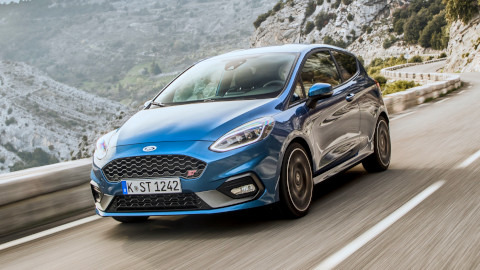
Ford Focus ST Turbocharged power, nimble handling, and an aggressive design that's sure to turn heads.
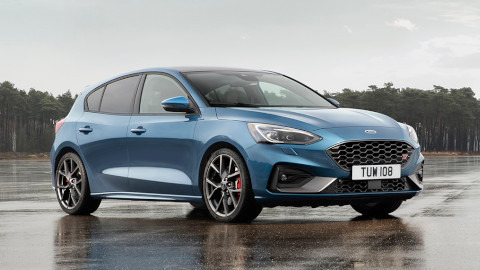
Ford Puma ST Offering the perfect blend of practicality and performance, this dynamic compact SUV has a lot to offer.
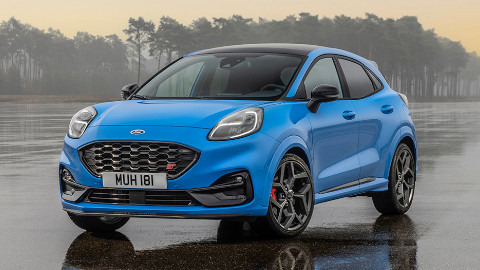
Characteristics:
The 2.0-liter Ecoboost engine in the Ford Focus ST produces 184 kW and 360 Nm of torque. It takes 6.5 seconds to reach 0-100kph, with a maximum speed of 248kph. The fuel efficiency is calculated to be 6.8 liters per 100 kilometers. Auto-Start-Stop is included in the package as well, leading to an increase in fuel efficiency by as much as 6%. This motor is connected to a 6-speed manual gearbox.(Brown, 2023)
The Fiesta stood out with its easy power. The 1,6-liter turbocharged engine delivers 240 N.m of torque starting at 1,600 r/min up to 5,000 r/min. When entering Mpumalanga from Gauteng, simply press the right foot to overtake slower trucks. Having 205/40 R17 tires on its wheels and a firmer suspension setup to ensure the Fiesta ST stays stable on suitable road conditions, I did notice it felt unstable on imperfect pavement. (magazine, 2013)
The Ford Puma ST can be equipped with either a 1.5-liter turbo three-cylinder petrol engine generating 197bhp, or a 168bhp 1.0-liter Powershift version with mild-hybrid technology. The 1.5-liter engine has strong power at low rpm and increases power in a consistently linear manner. With an endorsed 0-62mph time of 6.7 seconds, there are faster sports SUVs available, but the performance is sufficient for it to be an enjoyable driving experience. The Powershift variant takes 0.7 seconds more to reach 0-62mph, making it seem somewhat ordinary compared to other models in its class. Although it remains fairly lively and adaptable for regular driving, there's a slight sense of disappointment when comparing it. Another important distinction between the two engines is that the 1.5-liter option is equipped with a six-speed manual transmission, whereas the Powershift model features a seven-speed automatic transmission. The manual transmission has quick gear changes and optimal gear ratios, allowing you to fully utilize the distinctive engine. The automated transmission smoothly and rapidly changes gears, but manual gear changes can be made using the paddles on the steering wheel if preferred. No matter which engine you choose, the standout feature of the Puma ST is its handling. If you ease off the gas pedal while turning, the car will gradually rotate on its front wheels, helping you steer it accurately out of the corner. (Cheung, 2024)
Conclusion:
These 3 models of Ford's each have their own unique features and capabilities that can be used in different situations to their advantages depending on the driver's current environment and needs/wants.
References:
https://www.evanshalshaw.com/blog/what-is-ford-st/?srsltid=AfmBOopHcWU6B9lMsy8hC2mn4Vh0NPPk2e6Z9NJfcKSOKFk3KrlefHck
https://www.carmag.co.za/driving-impressions-blog/ford-fiesta-st-5/ https://www.whatcar.com/ford/puma/hatchback/review/n22293.
2 notes
·
View notes
Text
Why Going Back To The Fifties Is Not The Answer
(Before we go further, I want to say that, if you like the aesthetic of the 1950s, this is not intended as a criticism of or attack on you or your tastes. Like the aesthetics you like.)
If you are trad, the odds are good that you think the fifties were a good time. Not in all respects (racism, most obviously), but certainly in terms of gender politics. And, pretty much by definition, you feel that modern society has *%^&£* up in some respect, related to gender and probably to the economy.
But going back to the 1950s is not the answer.
The thing that popular discourse, both Left and Right, obscures is that the 1950s was an exceptional period. Europe and Japan had been trashed by the largest war in history and America was comparatively unscathed. After the Marshall Plan gave Europe money to buy American consumables, suddenly there was a massive market for them. And the USA reached a period of unprecedented prosperity.
Before the 1950s, the lone household without outer connections was more of an ideal than a reality, and mostly confined to the Midwest and West. The middle and upper classes had servants, and the Appalachians and much of the South had extended family networks. But come home tech obsoleting servants and a great deal of American money, and suddenly this household is viable for everyone. So viable is it that things like vegetable gardens are things of the past, and suburbs that need cars to get you anyplace useful are widespread.
Until it's not anymore. Because it wasn't long until Europe and Japan rebuilt their industries, and suddenly the boom came to a halt.
Additionally, we need to consider that there are different kinds of housewife. On the one hand, there is what we will call "the 1930s housewife" who, through agricultural work and hard economic circumstances, was regarded by society as the linchpin of the family. Then comes "the 1950s housewife", and suddenly men are earning enough and technology makes domestic work easy enough that suddenly, women have nothing to do and society sees them as existing to please their husbands and look pretty. In addition, the complete severing of the economy from the home means these women feel completely cut off from productive work.
And what happens when a significant portion of women have nothing to do and are seen by society as existing solely to please their husband? Feminism happens. That was what happened in the 19th century, and that's what happened in the 1960s. But in the 19th century, this was only the case for the upper and upper-middle classes. In the 1960s, this is the case for a broad sweep of society. And suddenly, feminism is a lot more successful and radical than it was before.
It's important to note here that neither feminism nor capitalism "killed" 1950s housewifery; that died a natural death.
Seeing as the 1950s were strikingly transient then, I see little reason to believe that a recreation of them will last more than a decade or two.
So what do we need? In my opinion, a return to pre-industrial ways, in some respects. Where the home, rather than the corporate workplace, is the centre of production. Where, because of this, men and women's work is equal but distinct, and equally valued by society. Where we, having learnt that life is more than food and the body more than clothes (Matthew 6:25, Luke 12:23), aim to produce what we need to live, and just a little more. Where our aim is not to leave our children with more material goods, but with stronger families, a happier society and the same well-maintained living structure that is the smallholding.
9 notes
·
View notes
Text
A lot of people bandy about "America has no culture" and they say it with a casualness that makes me wish they really understood it. Our culture is a fucking nightmare that never turns off. Nothing in Europe or the other Americas or Africa or Asia compares. It is a complex network of hollowness. Consumption is everything. Everything. *Everything*. All our religions are about consumption. All our sports are highly consumptive affairs. Transport, politics, the fucking weather report, literally everything is about consumption. We genuinely have next to nothing that is not commodified and sold to you. Nothing escapes the marketer's pen. They're even trying to take our libraries away, that's how all-encompassing the money obsession is. And a funny thing about a consumerist culture is, if you don't have money, you don't get to participate. Like yeah you can pirate media but like. Do you wanna go to a bar to meet people? Too bad, parking is 20 dollars and your bill will be another 20, at least. Do you want to go to a festival? Too bad, it's on moderately rough terrain and you can't risk your car (your lifeline to literally all your physical needs). You wanna fucking date someone? All of the first date spots are consumption based.
Your heritage is slaughter and torment and slavery. Every non-fascist white american's first goal in any situation is to avoid thinking about their heritage at all costs, because if you really understand it the thin strand of willpower that keeps you alive will snap. There is nothing to be proud of from your history, it is exclusively bad things. Opening any textbook on american history is simply a list of the times that an atrocity was done so white men could be marginally more comfortable. Even ostensibly okay things like baseball are pretty dark as soon as you go deeper than the surface.
Suburban culture has completely killed any natural cohesion of neighbors because the combination of distance and litigiousness and karening and HOAs means that making eyecontact with your neighbors is both rare and a risk. Apartment life is only marginally better, but gods know you're not gonna actually see any of them ever. There is no apartment function that anyone actually attends, because the landlord is running it and do you really want to spend time near your landlord and his flunkies?
There is, genuinely, not a single moment of american life where you can feel genuine connection. It's why everyone has fled online, where you can at least maintain a half-connection with others that might lack the human element but at least you aren't dying of loneliness. And what's online life controlled by, again? Oh right, capital. So finally you have an online pub to hang out at, but it's still owned by a landlord and you're still paying him somehow.
It's all expansive. It never ends. And that's why when people say shit like "lmao just make your own culture" when some desperate soul tries to respectfully, earnestly, effortfully relate to and participate in cross-cultural exchange and gets slapped down. Told that participating in another culture, another religion, another spirituality is definitionally appropriation and therefore definitionally evil and awful and unforgivable. I just don't know what to say. It's just, like, what is there to do then? Just die? Humans need spirituality of some kind. Culture of some kind. We're social animals we cannot survive on """""""office culture"""""""" any more than you can realistically just larp as a christian and pretend you believe in it so at least you can participate at church dinners.
America is essentially what happens when the soul-crushing power of capitalist imperialism has nothing pushing back against it. Every institution was built to support it, every institution is run by people who believe it with absolutely no second thoughts, every institution will destroy anything that is not capitalist imperialism on the off chance it might threaten it. There is nothing in the public consciousness that can resist it. And if you won / lost the birth lottery and ended up in America, it is a hell that roasts you eternally.
I dunno. This is just idiot white people american whining. But like, maybe a teensy bit of...not even sympathy, just, understanding that everyone in america is suffering from acute cultural starvation would be okay. In a "you know that he's drinking way too much but you don't have the heart to stop him since he has nothing left" kind of way.
4 notes
·
View notes
Text
Which Key Drivers will Help Grow Europe Connected Car Market?
The Europe connected car market is experiencing significant growth, fueled by rapid technological advancements and increasing demand for enhanced automotive safety, convenience, and user experience. Connected cars—equipped with internet access, communication interfaces, and smart technologies—are transforming how drivers interact with their vehicles and the surrounding infrastructure. This article examines the dynamics, growth factors, and future of the connected car market in Europe.
Market Overview of Europe Connected Car Market
Connected cars are reshaping the European automotive industry, driven by both consumer demand and regulatory pressures for increased safety and efficiency. The European connected car market is projected to see strong growth over the coming years. The demand for advanced driver-assistance systems (ADAS), infotainment systems, and Vehicle-to-Everything (V2X) communication technology is leading to substantial investments from automotive manufacturers, technology providers, and telecom companies.
Key Growth Drivers of Europe Connected Car Market
1. Increasing Adoption of IoT and 5G Technology
Internet of Things (IoT) technology and 5G networks are critical enablers for connected cars. IoT allows vehicles to exchange data with each other and with infrastructure in real-time, while 5G networks offer the speed and reliability needed to support high-data-rate applications such as autonomous driving and V2X communication. Europe has been at the forefront of 5G deployments, and the expanding network infrastructure is accelerating the adoption of connected car technologies.
2. Regulatory Push for Enhanced Safety and Reduced Emissions
Europe has stringent safety and emissions regulations aimed at reducing road accidents and lowering the carbon footprint of transportation. The European Union’s Vision Zero initiative, which seeks to eliminate road fatalities by 2050, has accelerated the development of ADAS and other connected car features that improve driver safety. Additionally, the European Green Deal is pushing for more sustainable transport solutions, encouraging car manufacturers to incorporate connected technologies that optimize fuel efficiency and support electric vehicles (EVs).
3. Growing Consumer Demand for Convenience and Comfort
Today’s consumers expect a seamless, connected experience across all aspects of life, including their vehicles. Demand for infotainment systems, on-demand navigation, and in-car Wi-Fi has surged, as consumers seek the same digital experience in their vehicles as on their smartphones. Automakers are responding by investing in infotainment platforms and integrating digital assistants, providing a convenient and enjoyable driving experience.
4. Advancements in Autonomous Driving Technology
The push toward autonomous driving has led to an increase in connected features in modern vehicles. Autonomous vehicles (AVs) rely heavily on real-time data processing, and connectivity is essential for the operation of multiple sensors, cameras, and radar systems. Although fully autonomous vehicles are not yet available to consumers, Europe’s investments in V2X technology are paving the way for future advancements in this area.
Market Segmentation
The connected car market in Europe can be segmented based on technology, connectivity type, service, and end-use application.
Technology: Advanced driver-assistance systems (ADAS), infotainment, telematics, and V2X communication are key technologies. ADAS and V2X communication are expected to see rapid adoption as regulatory bodies emphasize safety.
Connectivity Type: Cellular connectivity (3G, 4G, and increasingly 5G) dominates the market, while other options like dedicated short-range communications (DSRC) are also being developed.
Services: The range of services includes driver assistance, fleet management, infotainment, remote diagnostics, and over-the-air (OTA) updates. Fleet management and OTA updates are particularly popular among commercial operators.
Key Players in the Europe Connected Car Market
Several automotive manufacturers, technology providers, and telecom companies are actively competing in the European connected car market. Leading automakers like Volkswagen, BMW, and Daimler are investing in connected car technologies, often in collaboration with tech companies such as Google, Microsoft, and NVIDIA. Telecom companies like Vodafone and Deutsche Telekom are also crucial players, providing the network infrastructure necessary for connected vehicle communication.
Challenges and Concerns
While the European connected car market has tremendous growth potential, it also faces several challenges:
1. Data Privacy and Security
Connected cars gather vast amounts of data on drivers and vehicle performance. Ensuring the security of this data is a significant challenge, especially with concerns over hacking and data breaches. Stringent regulations such as the General Data Protection Regulation (GDPR) in the EU create added compliance requirements for companies handling vehicle data.
2. High Implementation Costs
Connected car technology requires substantial investment in hardware, software, and infrastructure. These costs can be prohibitive, particularly for smaller companies and manufacturers. Additionally, the economic impact of these costs on consumer pricing remains a challenge in mainstream adoption.
3. Interoperability Issues
As connected cars involve various components developed by different manufacturers, achieving interoperability between devices, systems, and networks can be challenging. Standardization efforts are ongoing but not fully established, which can impact the efficiency and consistency of connected car features across different regions.
Future Prospects of Europe Connected Car Market
The future of the connected car market in Europe looks promising, with rapid advancements in autonomous driving, vehicle electrification, and smart city integration. Europe’s ongoing deployment of 5G and investments in smart infrastructure are expected to further propel the growth of connected cars. Additionally, partnerships between automotive companies, technology firms, and telecom providers will continue to drive innovation and expand the connected car ecosystem.
The European Union's support for sustainable mobility solutions aligns with the vision of a connected future, where data-driven insights and autonomous technologies will transform transportation. In the near term, we can expect to see more semi-autonomous features in personal vehicles, greater connectivity in fleet management systems, and expanded use of ADAS in commercial and private vehicles alike.
The connected car market in Europe is set to evolve rapidly, driven by technological advancements, regulatory support, and changing consumer preferences. While challenges around data privacy, cost, and interoperability remain, the industry is well-positioned to overcome these obstacles. As Europe embraces smart mobility and autonomous driving, connected car technology will play a crucial role in shaping the future of transportation, paving the way for safer, more efficient, and more sustainable roads.
Explore Trending Market Research Topics;
Europe Electric Trucks Market
Europe Robo-Taxi Market
Europe Automotive Sensors Market
United States Used Car Market
United Kingdom E Bike Market
0 notes
Text
Volkswagen Group has taken a 5 percent stake worth $700 million in EV startup XPeng in a surprise move that's part of the German company's efforts to strengthen its position on the Chinese car market(..)As for Audi's deal with SAIC Motor, the two parties have signed a strategic memorandum to further expand existing cooperation. This will include joint development activities that will extend Audi's portfolio of fully connected electric vehicles on offer in the premium segment “swiftly and efficiently.”(..)
P.S. Very interesting news: VW is saved by this deal in China, but it opens European car market for Chinese EV technologies. Probably, some XPeng and SAIC designed EVs will arrive in Europe...
#Volkswagen#XPeng#SAIC#ev manufacturing#ev adoption#fossil fuel phase out#competition#Germany#China#Audi
2 notes
·
View notes
Text
Unwrapping the Wonka Bar Vol. 1 - Where is Charlie’s Town Located? Part 5
If you haven’t read the previous post, click here for Part 4 to make sure you are caught up to speed. If you’re already read the previous posts, then welcome back and let’s get back to the show!
Exhibit #4: The National Origins of Background Items
The key to making a film seem believable is to litter the background with real-life items that the audience could find at a store or in their own homes, and Charlie and the Chocolate Factory is no exception. But with regards to this analysis, the national origins of these background items can also shed light into just where in the world Charlie's town is located. And so, let us look into just some of the items featured as background set design pieces and the history of their brands.
First up for analysis:

The Bucket Family's Teleton television.
One of the ways Charlie and the Buckets stay up to date on the Golden Ticket contest is by watching the news reports of the different winners on their Teleton television set. In line with their socio-economic status, the Bucket's sole television is incredibly small, out of date and beaten up after decades of wear and tear. But as it turns out Teleton is not a made up brand of televisions, like Smilex Toothpaste at which Mr. Bucket toils away at their factory screwing on the caps, but a real-world television brand. Some research on the internet reveals that the history of the Teleton brand begins in 1964 when Teleton Electro Ltd. was registered in the United Kingdom as a company specializing "in the import and distribution of hi-fi products in Europe." However, by 1970, the Japanese electronics giant Mitsubishi acquired half of Teleton Electro Ltd., which had been its official distributor into West Germany up until that point. As part of the acquisition, Teleton Electro Ltd. simplified its name to Teleton and began selling Japanese products under this new name all throughout Europe. Additionally, Mitsubishi claims its acquisition of Teleton Electro Ltd. resulted in them controlling "about 50% of the UK's television market and aims to introduce color" television to the UK as well. In short, it appears that the Bucket's Teleton television is a piece of British history commemorating the country's connection to the Japanese economic miracle of the latter half of the 20th century that saw the Asian nation become a powerhouse in high-tech manufacturing.
The magazines at Bill the Shopkeeper's shop
Of the many items littering Bill the Shopkeeper's shop in order to make it look like any run-of-the-mill corner store in an urban area, all the magazines available for purchase pop out as significant. Since many of the magazines are not focused on by the camera, it is difficult to decipher the identity of all of the magazines available for purchase. Yet, I was able to uncover the names of many of the magazines geared towards those with niche interests, such as gardening, classic cars, trains and other hobbies.
Garden Answers Magazine
This magazine can be found both inside and outside of Bill the Shopkeeper’s shop and after conducting some research into the magazine, I found out that the magazine is published in the UK by Bauer Consumer Media Ltd., but unfortunately I was unable to find a copy of the same issue featured in the film, so I chose one that also featured a catchy tagline based around a type of flower.
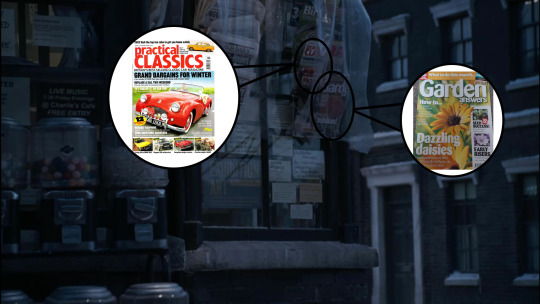
Practical Classics
Just like the previous magazine, Practical Classics is another magazine published in the UK by Bauer Consumer Media Ltd., but unlike the other, I was actually able to track down an image of the same issue used in the film. According to my research, it was the October 2004 issue, which lines up with the timeline for when the film was being filmed at Pinewood Studios in the UK.
Rail Magazine
A simple Google search revealed that Rail Magazine is “Britain’s No. 1 Modern Rail Magazine” as the copy I used for the example markets itself as, adding another UK-originating item to our list.

Steam Railway
Once again, we come face to face with another magazine of UK origin being sold in Bill the Shopkeeper's shop. Additionally, following an extensive dive into the history of this magazine, I can confirm that the issue being sold at the time Charlie wins his Golden Ticket is Steam Railway Issue #299 which was published on July 16th, 2004, around the same time as the Practical Classics magazine issue I was able to uncover was released as well.
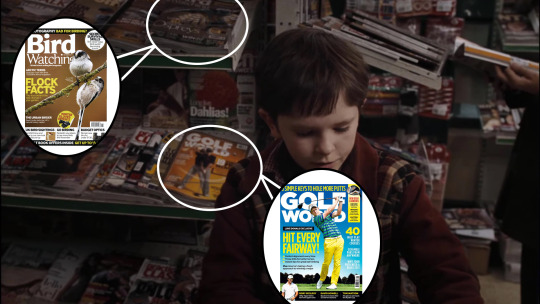
BirdWatching and Golf World
Once again, UK-based magazines shows up at Bill the Shopkeeper’s shop, with BirdWatching being another publication of Bauer Consumer Media Ltd. and Golf World apparently ceasing physical publication in 2014 following commercial shifts to digital content and marking the magazine as another victim of the death of print media.
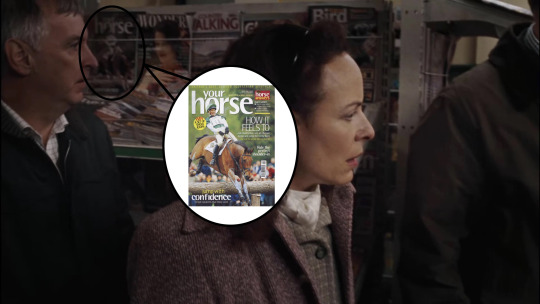
Your Horse
And for the final magazine on this list, Your Horse is a, you guessed it, UK magazine which markets itself as “Britain’s best-selling equestrian monthly.” And I was once again able to track down the exact issue on display in the film, with this one being Your Horse Issue # 259, published between July and August 2004, once again lining up with when the previous two magazines I was able to find a copy of online were also published.
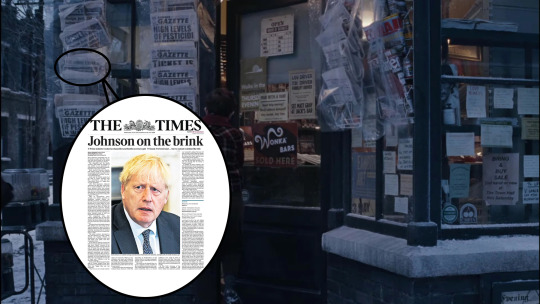
The Times Newspaper
And now, before we move on from Bill the Shopkeeper’s shop, I want to go over this final item being sold. The Times is one the UK’s oldest daily newspapers, publishing its first issue in 1785, and is thus a staple in the British media market. The inclusion of a copy of this London-based newspaper stands out since even though the film features many different newspapers, such as the Evening Bulletin, The Morning Chronicle and others, all of those other examples are completely fictional and thus cannot be pinned to a real-world location, unlike The Times.
Now, for a shift in our analysis, let’s move from items at Bill the Shopkeeper’s shop and onto items found elsewhere in town such as:

Mail Drop Boxes in Charlie’s town
In a shift from what we’ve been seeing for the last few examples, the blue oblong-shaped mail drop boxes shown in Charlie’s town are not British at all, but clearly inspired by United States Postal Service Drop Boxes. However, the logo on the drop box is not that of the USPS’ iconic bald eagle, but a generic envelope that appears to be traveling at rapid speed. Additionally, the logo heavily features the color red, which the USPS logo does not, and something more like the UK’s equivalent, the Royal Mail.
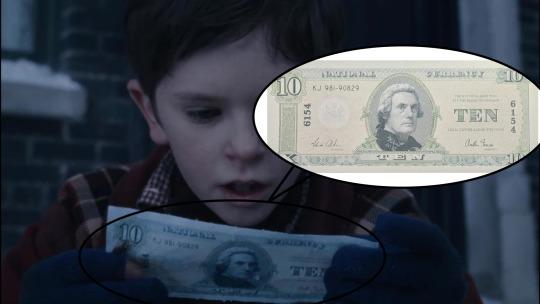
$10 Bank Note
When it comes to creating the illusion of a location with “both an American sensibility and a British sensibility” as Tim Burton desired for this film, one of the cleverest ways the crew went about doing this is through the use of fake currency. The $10 bank note that Charlie finds on the corner of First Street that he uses to purchase the Wonka Bar containing his Golden Ticket looks near identical to a US Dollar $10 bill, however on closer inspection it becomes clear that this prop is not an American Dollar as the bank note features a coat of arms on the left side with what appears to be some sort of deer and a lion flanking a shield that is reminiscent of the Royal Coat of Arms of the United Kingdom and many coat of arms of previous British colonies. Also, the opposite side features a quote in Latin from the Roman-era Egyptian poet Claudius Claudianus which translates to “Whoever desires is always poor,” something which, let’s face it, is a take on the pursuit of money too clear-eyed to be from an American.
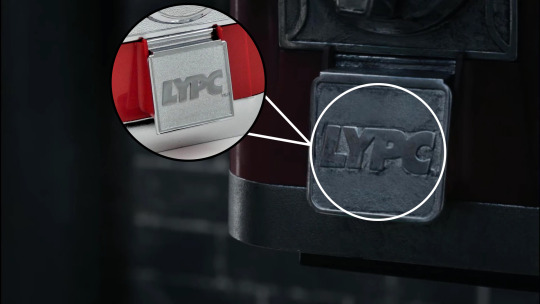
LYPC gumball machine
And finally, the gumball machines that a young Willy Wonka buys gumballs from during his rebellious phase where he indulges in all the candies he could get his hands on is clearly a LYPC brand gumball machine, an American company based out of the Chicago area. However, upon further research, I discovered that the LYPC website states the company started in 1993, well before the filming of Charlie and the Chocolate Factory began in our universe, but nearly two decades after 1975 when the item first chronologically appeared in the film. This is to say that we actually do not know whether the LYPC company in the Charlie and the Chocolate Factory universe is American, British or something else entirely as the history of the LYPC company is not the same in both universes.
That is all for the items being analyzed as part of this inquiry, but before moving on, one final observation should be stated. The items in this list can be classified into two categories; private goods, or items that are or can be one’s property, and public goods, items that are sponsored by the government so that everyone can use them. In short, all of the private goods in Charlie’s town are clearly of British origin, except for the LYPC gumball machine and even then we cannot confirm that the version of the LYPC company that exists in the Charlie and the Chocolate Factory universe isn’t actually British, whereas it is the public goods, like the mail boxes that are American-ish. And by American-ish I mean that while the items are clearly inspired by those found in the United States, they are also slightly different from the original inspiration.
That’s it for Part 5, click here for Part 6 when we analyze the fictional news station that appears the most throughout the film and what the range of its coverage tells us about where Charlie’s town is located.
Also, if you have better quality images of the scenes from the film I included in this post, feel free to share them with me so that I may replace the ones I used to improve the experience for the reader.
#unwrapping the wonka bar#Charlie and the chocolate factory#charlie and the chocolate factory 2005#unwrappingthewonkabar#charlieandthechocolatefactory#catcf#catcf 2005
2 notes
·
View notes
Photo
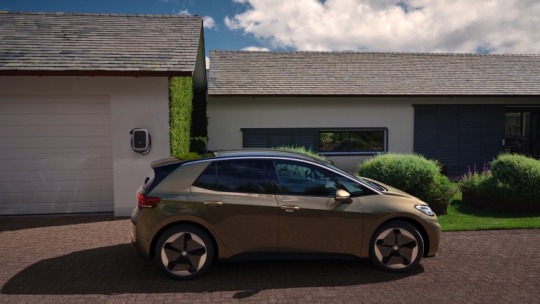
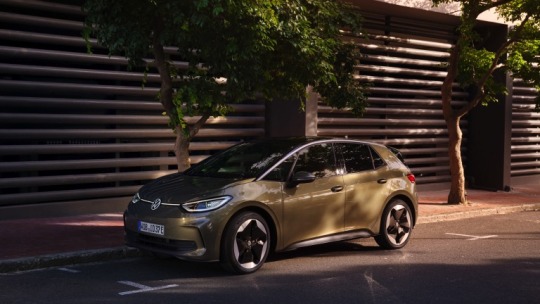
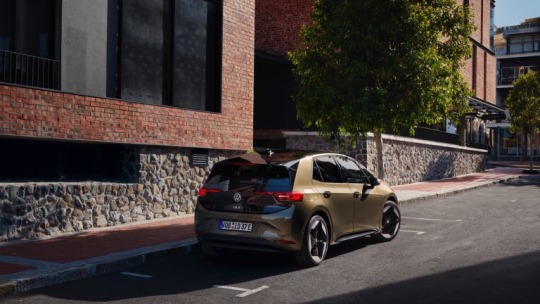
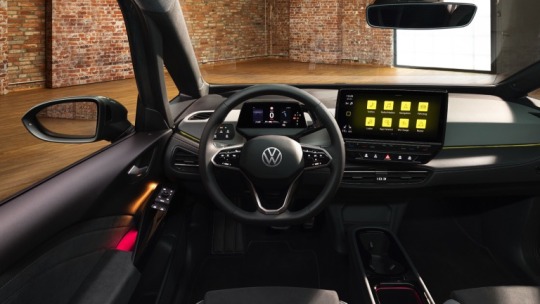
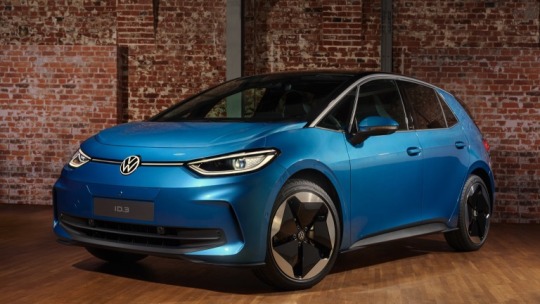
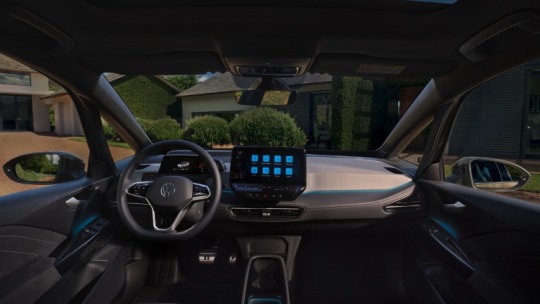
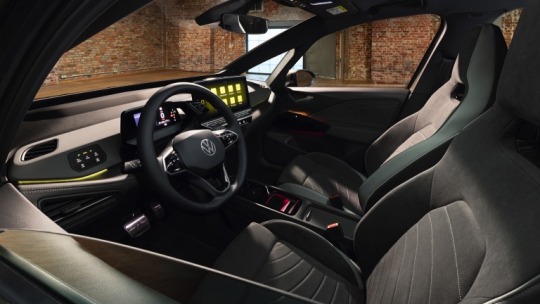
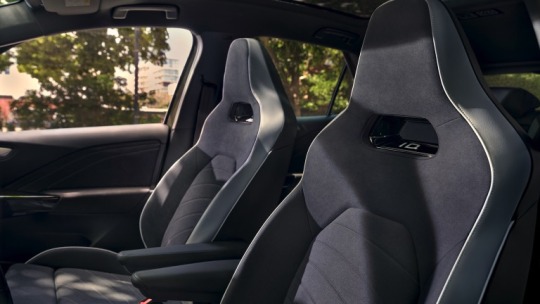
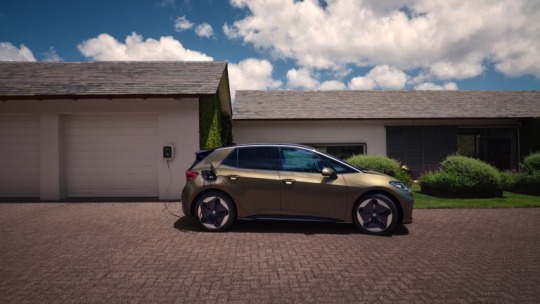
One of the best things about electric cars in 2023 is that we are now seeing 1st generation models from the “early years” being improved, revised and facelifted. For the early-adopters in the UK’s EV market, we are grateful for those consumers and businesses for having the foresight and courage to invest into all-electric technology in 2018 / 2019 / 2020, when little was known on how good this form of transport would be (and when public charging infrastructure was still in its early inception). And VW’s electric Golf replacement, the ID.3, was first shown to the world in 2016 before being pushed into production in 2019 with deliveries taking place around 2020 around Europe (including the UK). As one would expect, the ID3 was fairly popular, amassing some 11,032 registrations in 2021 (it was the 3rd best-selling EV in the UK) followed by becoming the 4th best-selling UK EV with 9,178 registrations in 2022! (see SMMT for more details - https://media.smmt.co.uk/). Launching with a Pure battery (45 kWh), Pro battery (58 kWh) and Pro S configuration (77 kWh), VW’s all-electric hatchback filled a necessary hole in the UK’s automotive market, which was historically dominated by SUVs and luxury / prestige options. Winning awards, like the Which? Best Buy of 2023 (https://www.which.co.uk/reviews/new-and-used-cars/volkswagen-id-3-2020), does prove that this is very much the zero-emission Golf equivalent.
But the “future of driving” is not a completed model and the German group have now confirmed a series of external, integral and technological improvements to this popular EV (see VW - https://www.volkswagen.co.uk/en/electric-and-hybrid/electric-cars/the-new-id3.html). As the “evolution of electric mobility” continues, the brand have confirmed some truly existing updates including:
Exterior - new colours such as Dark Olivine Green, sharper profile at the front together with new tail light clusters and dynamic turn signals plus IQ.Light LED matrix headlights set to be offered. New alloy options including the 19” Wellington and 20” Sanya alloys, a new Exterior Package will allow drivers to add LED matrix headlights with automatic lighting control, LED tail lights, illuminated strip between headlights and tinted rear windows. An Exterior Packages PLUS includes a panoramic roof and sun blind;
Interior - increased options on the dash and door trim, together with higher quality finish. Ability to upgrade to the optional electric seats with massage function and high-quality fabric. New panoramic glass roof with “heavenly views” and sunblind; and
Technology and safety - 8-colour ambient lighting, Travel Assist with adaptive lane guidance and predictive cruise control, Emergency Assist, Area View with 4 cameras, Adaptive Cruise Control, Lane Keeping Assist and Park Assist Plus can all be added to your new ID3.
Not unlike many other brands, the ID.3 will be utilising over-the-air updates for continual improvements coupled with the We Connect ID app for synergising your vehicle to your mobile device. Many EV customers enjoy the facility to start and stop charging, or warm their vehicle, from the comfort of the app.
3 notes
·
View notes
Text
-my grandfather was 8 when he and his family were rounded up on the Oregon coast, kept in a livestock pen for 3 very rainy days, then put into a cattle car to be carried out to the reservations in the east.
-my grandmother had two brothers and sister who were sent to mission school and never returned. They said they ran away. They lied.
-My mom remembers when Indians got enough citizenship to vote in Oregon. She describes her parents and their friends discussing if the should do it -vote -or if it was trick to register them.
-My friend took his grandmother out for her 100th birthday. He asked her what she thought were the most important things to happen during her lifetime. She told him: free wifi and the legal end of segregation.
-I remember those fucking nuns in mission school. I only went 1 year when the laws changed and we could go to other schools. We could live with our parents and ride a bus to school and back again and sleep that night in our own home. I remember that, you fuckers.
-I remember that my mom and two of her sisters gave birth in a hospital connected to the mission, and they didnt know for years that they'd gotten botched steralizations against their wishes and without their knowledge. I remember my parents desperatly trying to have more children. Theyd always wanted a bunch of kids. The house my dad built had many empty guestrooms. Eventually they sold it. I remember my mom having to have a hysterectomy 2 years ago because of all the health problems caused by the fucked up surgery. I remember sitting in a meeting and one of the nurses there having to put me through a fainting protocol because i got a text from my stepfather that during the hysterectomy they discovered one of mom's damned ovaries was just fucking gone. I wonder sometimes if some sick fuck retired doctor kept a genuine Indian ovary in a jar in his office. I wonder if his nazi kids and grandkids pull it out to show to guests as a conversation point. I think about how whites were paid piecework for Indian scalps amd seeing one dried out and leathery in an antique store in a small town in Idaho. There is evil in the Americas. The nazis were here long before they were ever in Europe.
- I remember my highschool history teacher showing us the number tattooed on his wrist. I remember him showing us all these recordings of ordinary German citizens talking about how they didn't see anything wrong happening. How there must have been some sort of perfecrly mundane reason for the endless smoke pouring from the ovens in the camp up in the hill. How it was all just politics. How they were reassured that all the people who were taken had just moved in the night, or were much happier wherever they'd gone to. "But you saw them all: the Jews, the other prisoners going into the camp. But you never saw them leave. Didn't you think that was odd?" "We just figured they'd moved from the camp in the night while we were sleeping." "Where?" "What do you mean?" "Where did you all think they went -in the middle of the night?" "Oh. We didn't know." "Didn't you wonder?" "Why would we?"
- I remember that same teacher explaining how the nazis had gotten a lot of their ideas from the US government's Native American policy. The death camps were modelled after our reservations. The dehumanizing and the stories of savages/gremlins that ate white babies and were less than human were based on the clever marketing campaign set up to not just enable the settler take over, but used to unite the fragmented people of newly forming colonial nation. He fucking showed us. There is publically available documentation of all of this.
-I remember getting put on the no fly list. I remember finding out about it because when we tried to buy tickets for the whole family to travel down to New Mexico for my granduncle's funeral the whole purchase was bounced. We were told why that might be the case so we tried seperate purchases for everyone. Me. It was me. Several years later my roommate's family friend -an old white guy with some pull, found out why. I was teaching K-3 and moonlighting as a computer programmer back then. And I'd printed some photos of holidays around the world to share with my students on the same computer I wrote code from. My own computer, in my own office, in my own home. He said it also didn't help that I wasn't white.
-I remember that fucker's first time in office: I remember seeing my coworker snatched from the elevator by ice agents and shoved into an unmarked van. He was a 3rd generation American.
-I remember having to warn the non-white, non-abled, non anything a nazi would want to gas you for residents of the dvsat shelter we worked with to not go out at night, not go out alone, not walk on these specific streets or go into these specific shops. I remember the time a native Hawaiian chick on my caseload didn't come back when expected and everyone was out of their mind with worry. She came back, tear-streaked and shaking, and told us about how she'd gotten lost (not in Hawaii any more, Dorothy) and ended up in one of the neighborhoods she was supposed to avoid, and being chased by some of the proud boys that patrolled our city streets in their ridiculous be-flagged pickups, and how some nearby restuarant diners had rushed her into the restuarant, and the staff there had hid her in the pantry, and all the diners lied and said they hadn't seen her. My teacher read Anne Frank to us in 6th grade. Do they still read that in schools?
-I think about that time I went into a DMV and the woman behind the counter told me to "sit over there," next to two men, and well away from the other patrons. Then a highway patrol officer came over and told us to go with him. In the parking lot he explained that he'd been called to take us to an immigration detention center. But instead he directed us to a "safe" DMV 40 miles away and walked away muttering about having had it up to here with those idiots in there. The two American Samoan men started laughing. Honestly, I didn't feel like laughing. I didn't feel like anything. I was thinking about the mission school and wondering if the detention center looked like it had.
-I've spent the last couple of weeks handing out flyers in different languages. I don't use an interpreter. I have no way of knowing if I can trust them. But somehow I manage to convey to the people I visit in field hand huts and steamy laundries that they are in a sanctuary state and what that means. That no one in our offices will turn them away or turn them in. At least I hope Im conveying that. Then I tell them, using paper language dictionaries if needed (librarians are superheros) how to get away, who to talk to, how to find the big dipper. I think a lot of my high school history teacher and those faded numbers on his wrist.
Oh I know they're coming for me first. Im your canary.

#indigenous#we are still here#american politics#mission school#segregation#holocaust#shoah#indian#american indian#evil nuns
75K notes
·
View notes
Text
How Automotive Display Systems Are Shaping the Future of Vehicle Technology

The global automotive display system market is on a steady growth trajectory, driven by the rising demand for advanced vehicle infotainment, safety, and connectivity solutions. The industry was valued at US$ 15.3 Bn in 2022 and is projected to grow at a CAGR of 7.7% from 2023 to 2031, reaching US$ 29.7 Bn by the end of the forecast period.
Market Drivers and Growth Trends
1. Surge in Automotive Sales and Demand for Modern Displays
The increasing global sales of automobiles, particularly in emerging markets, have fueled the need for advanced in-car display systems. Automotive manufacturers are integrating high-tech display solutions to enhance user experience, improve safety, and cater to consumer preferences for digital interaction.
2. Rise in Connected Vehicles and Augmented Reality-Based HUDs
The demand for connected vehicles with smartphone integration and augmented reality (AR)-based head-up displays (HUDs) is significantly boosting the market. With the integration of Apple CarPlay, Android Auto, and advanced telematics, smart displays have become a crucial feature in modern vehicles.
3. Growth in Electric and Autonomous Vehicles
The rise of electric vehicles (EVs) and advancements in autonomous driving technologies are key factors propelling the automotive display system industry. Displays in EVs play an essential role in monitoring battery life, range estimation, and navigation.
4. Adoption of Digital Instrument Clusters
Automakers are increasingly adopting digital instrument clusters, replacing traditional analog dashboards with advanced TFT-LCD and OLED displays that provide real-time vehicle data and infotainment features.
Key Technological Advancements
1. Gesture Control and Advanced Infotainment Systems
Gesture recognition and touch-free interaction are gaining traction in vehicle displays, allowing drivers to operate infotainment and navigation systems safely while keeping their focus on the road.
2. Telematics and Steering-Mounted Controls
Telematics solutions integrated with steering-mounted controls provide an intuitive interface for drivers, enhancing safety and convenience. Real-time traffic updates, AI-powered navigation, and voice-activated assistance further elevate the driving experience.
3. TFT-LCD Display Technology Dominance
The TFT-LCD segment dominated the market in 2022 and is expected to retain its lead. These displays are widely used in instrument clusters, infotainment systems, and head-up displays due to their affordability, high resolution, and durability.
4. Popularity of 6” to 10” Display Sizes
The 6” to 10” segment is gaining traction, with leading automakers such as Ford, BMW, and Lexus integrating these displays in their infotainment and dashboard systems. These screen sizes offer an optimal balance between visibility and affordability.
Regional Market Outlook
Asia Pacific: The Leading Region
Asia Pacific holds the largest market share, driven by the rapid penetration of luxury vehicles, increasing adoption of infotainment systems, and strong automotive production in China, Japan, and South Korea. China alone accounts for over 50% of global EV production, making it a key market for automotive display systems.
Europe: Strong Presence of EV and Autonomous Vehicle Development
Europe is another major player in the automotive display system market, supported by well-developed transportation infrastructure and the presence of major EV and autonomous vehicle manufacturers such as Volkswagen, BMW, and Mercedes-Benz.
Competitive Landscape and Key Players
The automotive display system market is highly consolidated, with leading companies focusing on technological innovations, strategic partnerships, and mergers & acquisitions to maintain their competitive edge.
Major Players:
Robert Bosch GmbH, Continental AG, Denso Corporation, Alpine Electronics, Inc., , Aptiv, Valeo, LG Display Co., Ltd., Panasonic Corporation, Nippon Seiki Co., Ltd., AUO Corporation, Visteon Corporation, YAZAKI Corporation, Magna International Inc., Pioneer Corporation
Conclusion
The automotive display system market is set for significant expansion, driven by rising demand for connected and electric vehicles, advancements in infotainment technologies, and growing consumer preference for luxury features. As automakers continue to invest in digital dashboards, AR-based HUDs, and AI-powered vehicle interfaces, the market is poised for substantial growth in the coming years.
0 notes